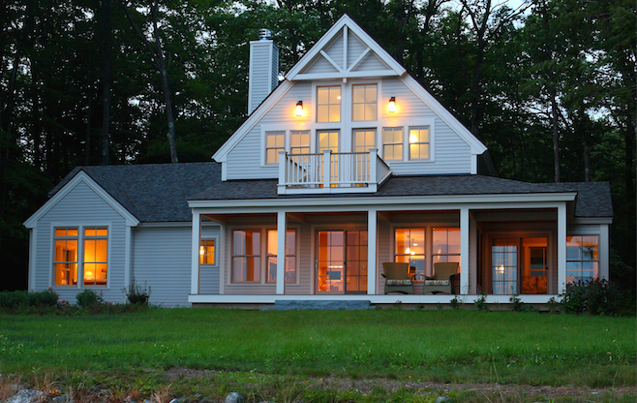
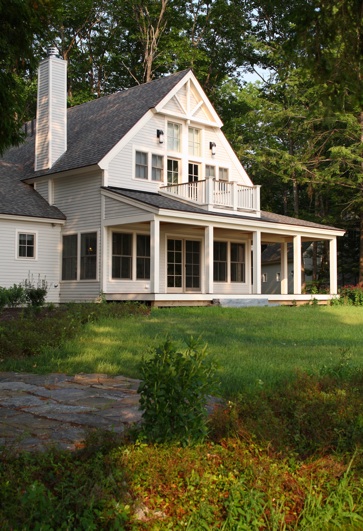
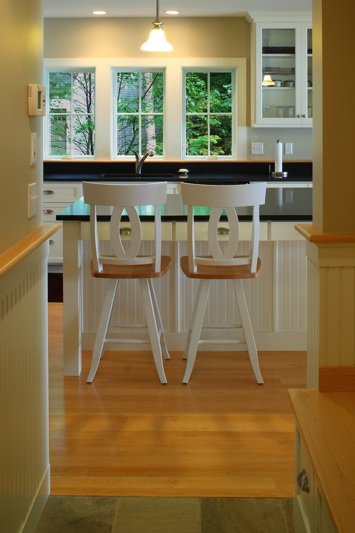
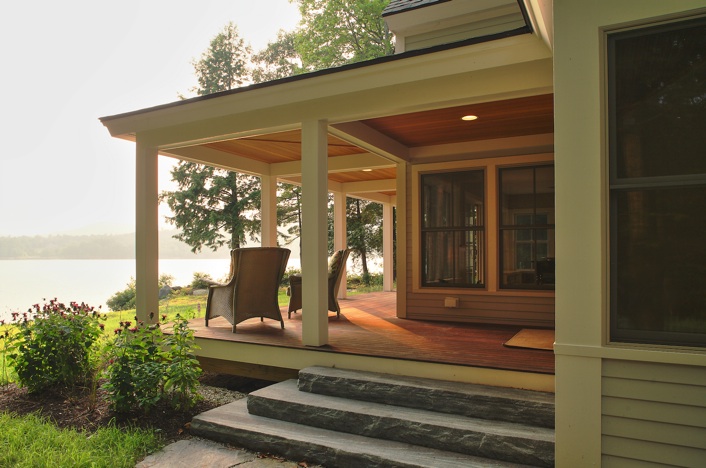
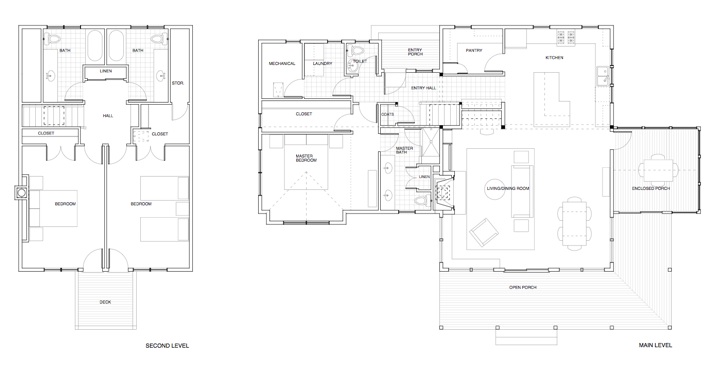
Canton Cottage
When a couple from Virginia had the good fortune to find this lakeside property, it was occupied by a mobile home and a run-down cottage. But the sandy beach, westerly views of the mountains, and wooded, relatively flat, private site was exactly what they had in mind for a year-round home.
The new house is located where the mobile home stood, so very few trees had to be taken down. Due to the mature tree canopy, access to the sun for solar-generated electricity or solar-heated hot water was not possible. This meant that, while solar energy could not play a big role, other strategies had to be employed to minimize the carbon footprint of the house and make it economical to heat and air condition.
The strategy was to build a very tight, well insulated building shell that reduces the heating and cooling loads. Another strategy was to heat the house with electricity instead of an oil-fired or propane-fired heating system, both of which can not provide air conditioning in the summer anyway. The solution was to use a ground source heat pump system. It works on the same principal as a refrigerator: it removes heat from the house in the summertime and moves it back into the earth and works in reverse in the wintertime: it extracts heat from the earth to heat the house. The real beauty of the heat pump is that it leverages the watts of electricity by a multiple of up to 4:1. This means four units of heat for every unit of electricity (electric baseboard heat has a 1:1 ratio of heat to electricity). As a backup for the few really cold days in mid-winter, there is a wood-burning fireplace and electric toe space heaters in the bathrooms.
